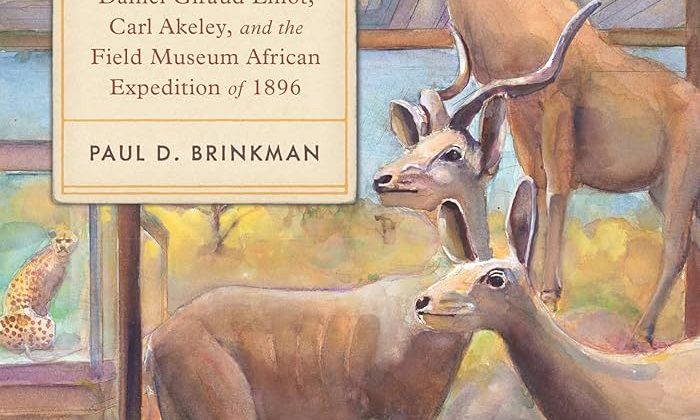

Paul D. Brinkman is Head of the Environmental Humanities Research Lab and Curator of Special Collections at the North Carolina Museum of Natural Sciences and Adjunct Associate Professor of History at North Carolina State University. This interview is based on his new book, Now Is the Time to Collect: Daniel Giraud Elliot, Carl Akeley, and the Field Museum African Expedition of 1896 (University of Alabama Press, 2024).
JF: What led you to write Now is the Time to Collect?
PB: I’d been working on another book project when a librarian at Chicago’s Field Museum asked me to identify the handwriting in a journal that was being offered for sale by a London rare book dealer. Immediately, I recognized the distinctive scrawl of Field Museum zoologist Daniel Giraud Elliot. I was excited to learn that the journal had been written by Elliot during the museum’s first zoological expedition to Africa in 1896. My librarian friend purchased the journal, then she invited me to work on it. I gladly accepted the challenge of writing a history of this formative expedition.
JF: In 2 sentences, what is the argument Now is the Time to Collect?
PB: In the late nineteenth century, museum zoologists recognized that the spread of Western civilization was inevitably driving many animals to the brink of extinction. They responded – at first – not by trying to save the species, but by collecting specimens of these endangered animals for permanent preservation in museum collections. I call this practice salvage zoology.
JF: Why do we need to read Now is the Time to Collect?
PB: Dioramas are among the most spectacular and most popular museum exhibits. Today they’re often touted as icons of conservation, yet many of them were built in the early twentieth century as the culmination of salvage zoology. Museum constituents of all kinds – curators, directors, donors, museum visitors, etc. – need to understand the history of how and why museum collections and exhibits were first made. If you love museums, in other words, you need to read this book.
JF: Why and when did you become an American historian?
PB: I’ve worked in science museums for my entire career, but I was irresistibly drawn to the amazing, untold stories behind museum collections. Fantastic tales about the collecting of dinosaurs and other huge vertebrate fossils in the American West I found particularly intriguing. I started researching, writing, and telling those stories in the mid-1990s, and I’ve been at it ever since.
JF: What is your next project?
PB: I hope (eventually) to return to a project on the history of an unusually complete specimen of a rare fossil mammal from South America called Astrapotherium magnum. The working title of this project is: “Harvesting the fruits of one’s own labor.”
JF: Thanks, Paul!